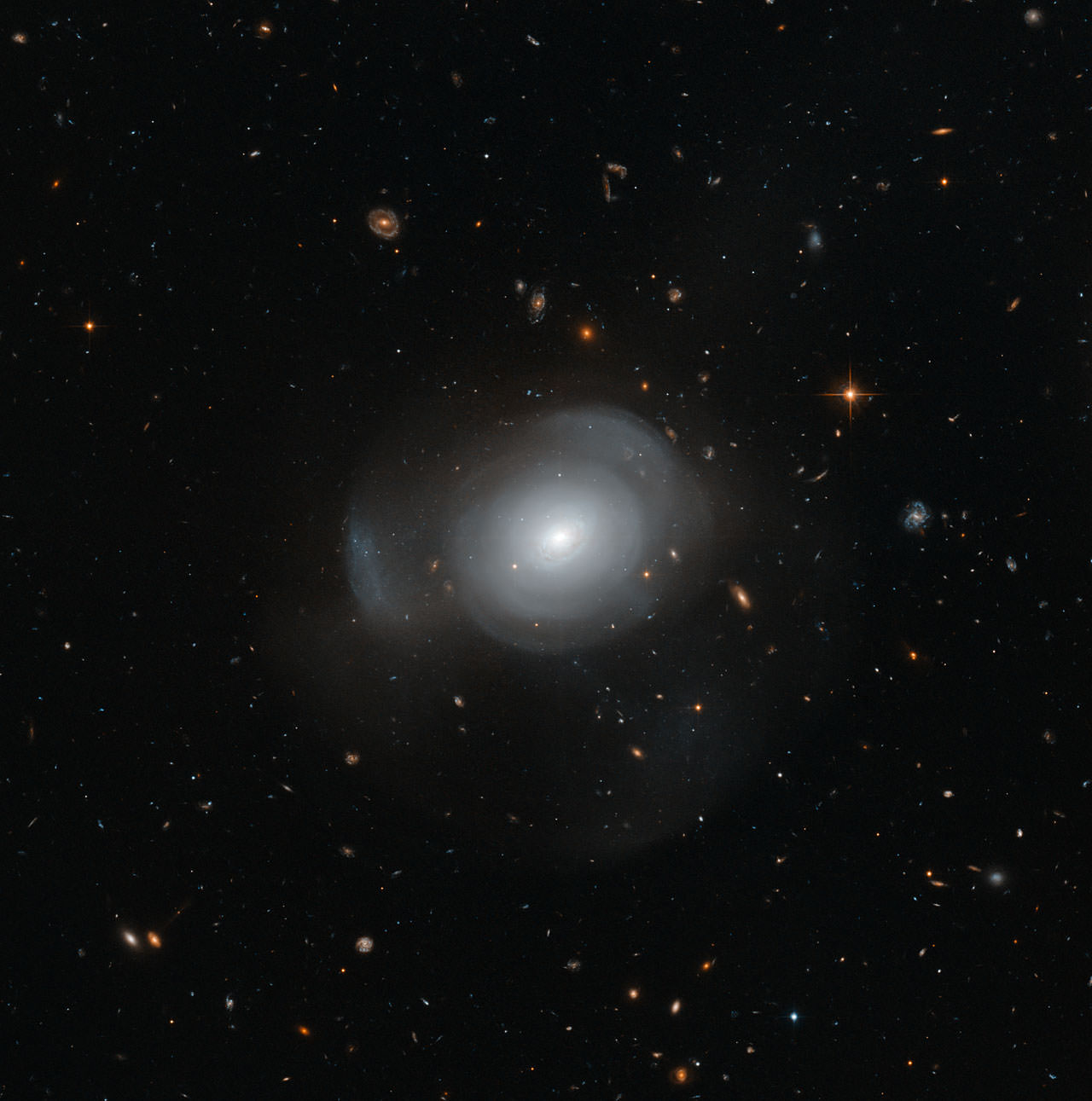Across the universe, some 350 million light-years away, lies a galaxy that looks like it has white rose petals. Don’t let the tranquil appearance of PGC 6240 fool you as to its past, however. This galaxy in Hydrus (The Water Snake) likely was dramatically altered by a galactic merger.
There’s a bunch of evidence pointing to this. There are “star shells” of globular clusters around the galaxy, but they’re distributed unevenly — some are close in, some are way out in the distant suburbs. Also, “several wisps of material have been thrown so far that they appear to be almost detached from the galaxy altogether,” stated the Hubble European Space Agency Information Centre.
“The most likely explanation for both the galaxy’s stacked shell structure and the unexpectedly young star clusters is that PGC 6240 merged with another galaxy at some point in the recent past,” the agency added.
“Such a merger would send ripples through the galaxy and disrupt its structure, forming the concentric shells of material seen here. It would also ignite a strong burst of star formation in the galaxy, which would then trigger similar activity in nearby space — leading to the creation of new, younger globular clusters around PGC 6240.”

